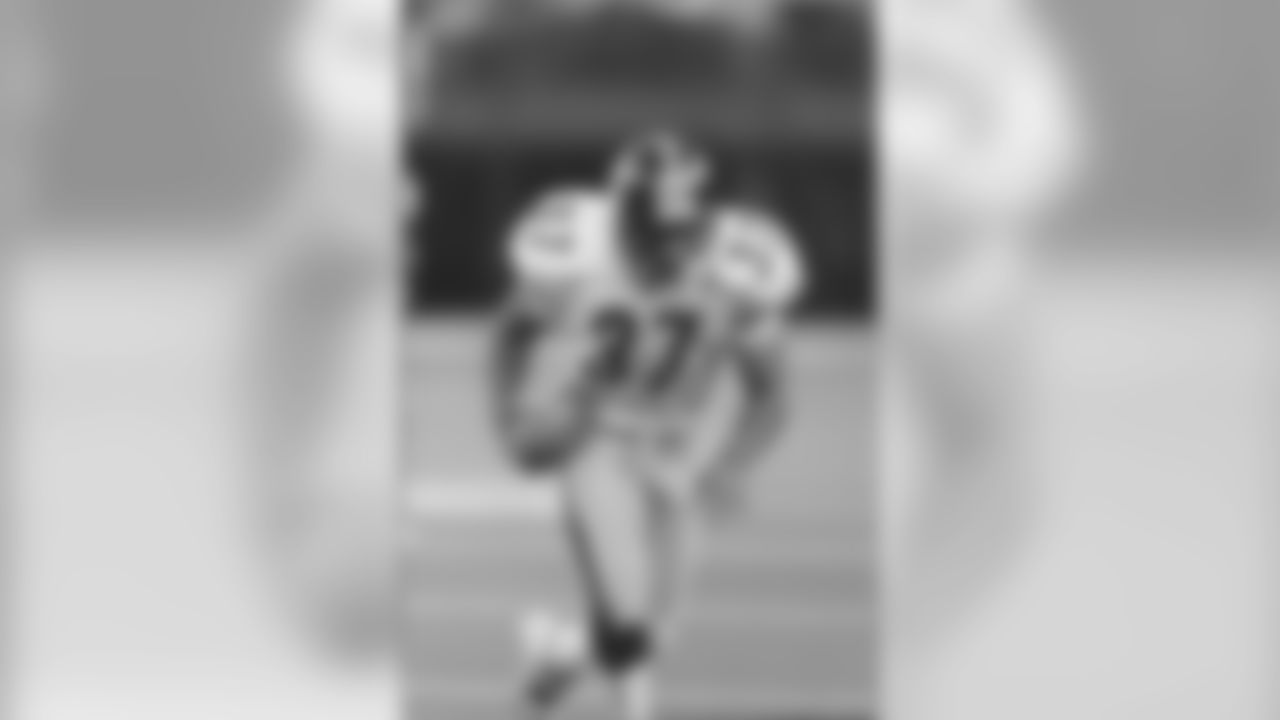Ready or not, here it comes:
- It was 1989, and the NFL Scouting Combine was at hand. Carnell Lake, a linebacker from UCLA who was going to try to make a living as an NFL safety, was going to Indianapolis to make an impression. Deion Sanders, a cornerback from Florida State, Prime Time in the making, was going there to put on a show.
- "I knew I was going to try to make the transition from linebacker to safety," said Lake, "and so what I really was trying to do was to shed myself of all linebacker thoughts."
- Lake played in both the East-West Shrine Game and the Senior Bowl, but he knew he needed to show NFL scouts more if he was going to entice them to use a draft pick on him. Bill Nunn is one of the greatest scouts of all time, and his philosophy on defensive backs always has been that you watch to see if the guy has the requisite athletic skills and movement. If a guy has that, then Nunn believes he can be coached to play the position the way his team wants it done.
- "What I thought I would do in my preparation for the Combine was I didn't worry about the bench press, because I knew I'd be strong enough for cornerback or safety," said Lake. "I wanted to make sure I was ready for the 40 and the vertical jump and the other drills I would have to do. So once the Senior Bowl ended, I didn't go into the weight room hardly at all. I just went onto the field and ran 40s and did defensive back drills."
- Lake played on a UCLA defense that included Daryl Henley, a cornerback who ended up drafted in the second round by the Rams that same year, and for Lake there was no stint at a performance camp or paying a private trainer. He simply asked Henley to show him some defensive back drills he could practice on his own.
- "When I got to the Combine, they didn't tell me what group I was going to be in," said Lake. "Initially, they threw me in with the linebackers, and I knocked that out. I wasn't worried about doing the 40, or the vertical, or the cone drills with the linebackers. I figured I'm probably going to be faster than those guys anyway. What I was concerned about was whether they would put me in the defensive backs drills. It turned out they put me in both. So on the day of the workouts, I had to stay. I did the linebacker drills with the linebackers, and then they told me to stay and I did the defensive backs drills with the DBs. I had to work out twice that day."
The best photos of Carnell Lake throughout his career.


















- And so it was that Lake's Combine experience included working in the same linebackers group with Derrick Thomas and then running the 40 with the defensive backs group that included Deion Sanders. Also at that time, players did the bench press and the 40 on the same day, at least those players who weren't sufficiently big-time to avoid it.
- "I'm exhausted after I finished the linebacker drills, and Deion is over there warming up for the 40," said Lake. "Deion said, 'I'm just running the 40. I'm not doing any of that other stuff.' And I thought to myself, man, I wish I had it like that. I was bench pressing and stretching and jumping. When the 40 times came out, I thought, I'll bet I would've been a lot closer to Deion's time if I didn't have to do all of that other stuff."
- The time Sanders posted in that 40-yard dash 28 years ago remains the stuff of Combine legend. As Lake remembered it, Sanders ran the 40 – one time – and after he crossed the tape at the finish he just kept sprinting. Down the field. Into the tunnel at the corner of the end zone. Gone. Left the building. Never checked on his time. Didn't care to run again to try to do better.
- Sanders' time was a hand-held 4.2. And the story goes that when he ran out of the tunnel, he continued to run out of the stadium, where one version of the legend has it he got into a waiting limousine that took him to the airport.
- That 4.2 seconds was the cherry on top for Sanders, a 6-foot-1, 192-pound cover cornerback/returner who was coming into the NFL after a college season where he had five interceptions and returned two of those for touchdowns, a 15.2-yard punt return average with one of those returned for a touchdown, and with a 4.2 in the 40-yard dash at the Combine.
- Even with that, though, Sanders ended up being the fifth overall pick, by the Atlanta Falcons. Sounds ridiculous until you realize that Troy Aikman, Barry Sanders, and Derrick Thomas were three of the four players picked before him.
- As for Lake, he ended up being a second-round pick of the Steelers – 34th overall – and the perfect safety complement for cornerback Rod Woodson. A lot is made, and rightfully so when talking about Lake's playing career, about the 1995 and 1997 seasons when he moved from safety to cornerback in the middle of each season to stabilize the Steelers' secondary and help the team win those AFC Central Division titles and go deep into the playoffs. But it's also historically accurate to recognize Lake and Woodson as the two primary pieces of the defensive scheme that eliminated the run-and-shoot as a viable NFL offense.
- When Kansas City defensive coordinator Bill Cowher was hired in 1992 to follow Chuck Noll, the Steelers defensive staff also included Dom Capers, Marvin Lewis, and Dick LeBeau. They came up with what was called at the time, the dime-defense. It included two defensive linemen plus two outside linebackers as a four-man front, a middle linebacker, and six defensive backs.
- Two of those six defensive backs – who ended up being Lake and Woodson – lined up on the two inside slot receivers in the run-and-shoot, where they either turned and ran with the receivers in coverage, or they came off the edge with a free path to the quarterback. Those run-and-shoot slot receivers were lined up just outside of each of the offensive tackles. It worked so well because Lake and Woodson actually could do both things, because if all they could do was come off the edge and rush, a quick pass to the slot receiver in the vacated area would've resulted in a series of big gains and/or third down conversions.
- When legendary defensive coordinator Buddy Ryan came to refer to the run-and-shoot as the chuck-and-duck, he probably was thinking about what the Steelers' dime-defense was doing to that offense, and to the quarterbacks who were operating within it.














